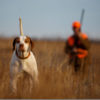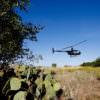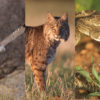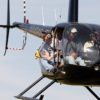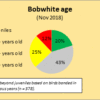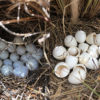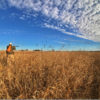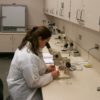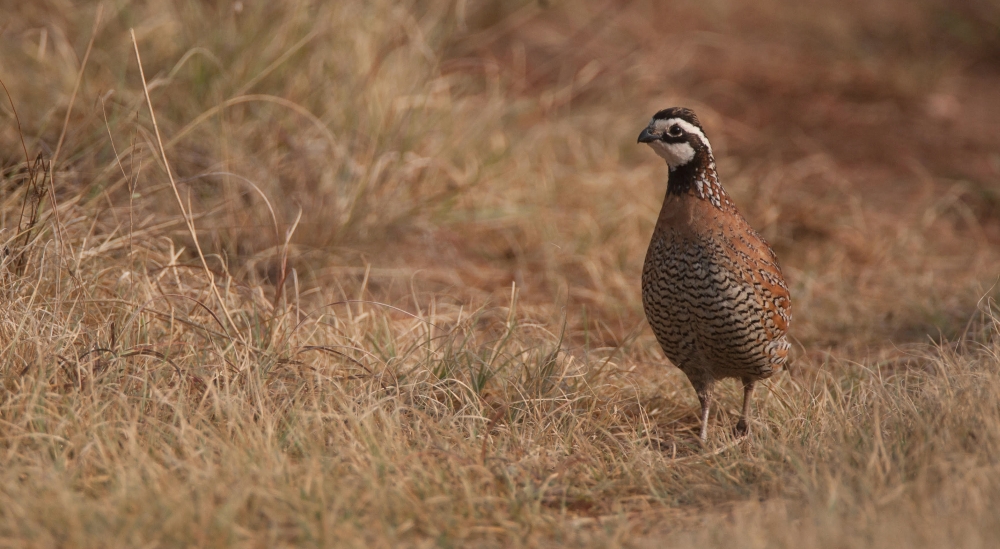
by John Palarski
Status: In early April we released 167 (n = 103 from south Texas, n = 64 from Rolling Plains ecoregion) wild-trapped bobwhites on a site in Erath Co. The study site is a 2,500 acre ranch in western Erath Co., which like many sites in the Cross Timbers used to have huntable quail populations (20 years ago), but no more. Our objective is to determine if translocation of wild-trapped bobwhites can “rekindle” an otherwise dying ember.
We equipped 111 birds (mostly females) with radio transmitters and used a “soft” (i.e., delayed) release strategy. Since that time, we have documented 86 mortalities. Apparent survival as of 24 September 2019 was 0.22 (survival estimates can range from 0.0 [all birds died] to 1.0 [all birds survived]). We attributed 52 of the 86 mortalities to mammals based on damage to the transmitter and sign left at kill sites (see below for possible predisposing factors).
You may be wondering, “why didn’t you conduct some intensive predator control?” We did! In an attempt to “soften the beach-head”, we trapped a total of 165 raccoons, 7 coyotes, 6 opossums, and 1 bobcat from Feb-Sept. Site fidelity of the birds has been “fair to good”; we only documented 17 individuals that dispersed off property.
Our nesting season in Erath County has come to a close. We documented 9 nests from translocated hens during the 2019 breeding season. There did not appear to be any difference in nesting activity between source population (4 birds from S. Texas, 5 birds from Rolling Plains ecoregion). Clutch sizes averaged a little over 12 eggs per nest. All nests were located in clumps of little bluestem (Schizachyrium scoparium) relatively close to the release points (<0.5 mile). We observed our first hatch on 12 June (16 eggs); and our last hatch occurred on 28 August (8 eggs). Multiple broods have been spotted across the study site with individuals without radio transmitters, so we are optimistic that our non-marked hens (n = 10) nested successfully.
From 15 April – 27 April and 29 July – 2 August we conducted a habitat evaluation on the study site. We are in the process of analyzing the data from that survey. We will continue to conduct habitat evaluations on the study site for the remainder of the year.
During the second week post-release (14-15 April) we began to find dead bobwhites that seemingly “starved” to death (n = 18). These birds were emaciated and had lost approximately 1/3 of their total body weight. We sent 2 of these birds in to the TVMDL in Gonzales, TX for necropsies. Coccidia (Eimeria spp.) were identified as being present in 2 of our samples and coccidiosis was tentatively diagnosed as the cause of death. On 13 May 2019, 5 additional whole birds were submitted to the National Wildlife Health Center in Madison, WI for further testing in coordination with Dr. Bob Dittmar (TPWD veterinarian). Results were inconclusive on cause of death. A similarly “idiopathic” mortality event (n = 33 mortalities) occurred during this same time period at the Rolling Plains Quail Research Ranch 150 miles to the west of my study site. A cold rain on 13-14 April may have predisposed birds to this mortality event.
On 18 June, we flew a 10 square mile area around the study site in an attempt to locate birds that had dispersed off site. We successfully located 2 birds; both of which had dispersed over 1 mile from the release point. Both birds were alive.
Plans going forward: We will continue to monitor radio-marked individuals throughout the fall and into the winter months. We will conduct covey call counts this October to compare pre and post translocation observations. In January, we will trap the study site in order to estimate abundance. We intend to repeat the experiment in 2020. To that end, we hope our existing “quail donors” will be generous enough to permit us to trap on their properties next March. Additionally, if you know of other “quail philanthropists” who might be interested in cooperating, please let me know and I will contact them. I will make plans to initiate pre-baiting by 15 January.
Acknowledgments: We thank the Rolling Plains Quail Research Foundation, Park Cities and Cross Timbers Chapters of Quail Coalition, Quahadi Ranch, Jim and Barbara Salter, and Tarleton State WSES Department for facilitating this project.


